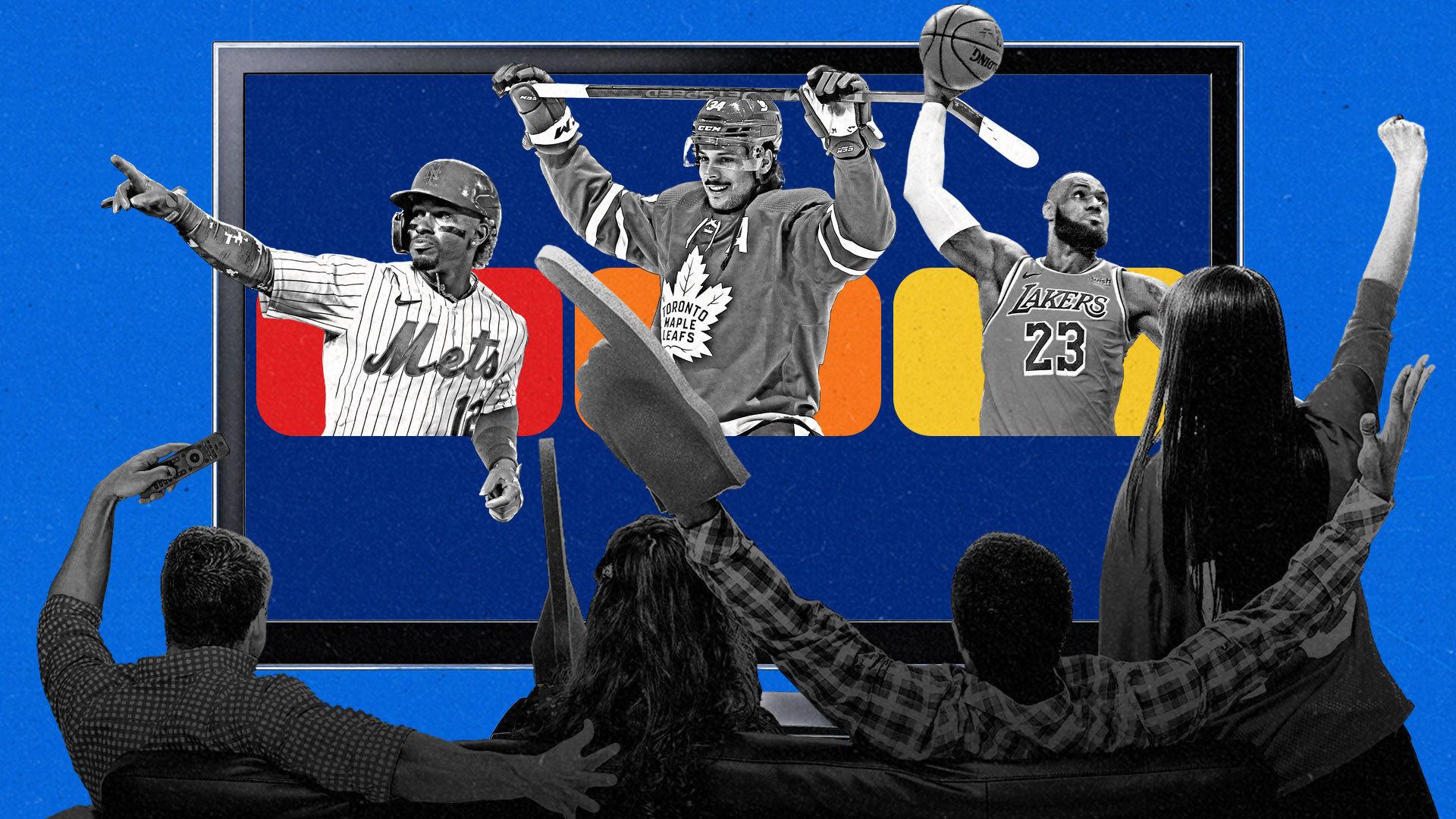Live sports ‘fandom is flourishing,’ though perhaps it's not where you think

Illustration by Nick DeSantis / Getty / The Current
When it comes to capturing audiences, live sports on TV have always been a safe bet, as the channel provides advertisers with plenty of engaged viewers. And while that’s still as true today as it was pre-pandemic, what’s changed is the way fans are watching their favorite teams.
As the NBA returns this week to its full 82-game regular season, a case in point is the NBA League Pass, which allows hoops fans to stream hundreds of live and on-demand games from anywhere in the country. With fans able to watch games out-of-market, “fandom is flourishing,” Seth Ladetsky, the head of digital strategy at Turner Sports, tells The Current.
“Sports drives patterns. Just like the old network model — ABC, CBS, or NBC — you’re going to watch those networks to watch the game. And it’s still true of every platform,” he says. “Real growth [in sports viewership] is now being driven by multiple endpoints, like CTV and sports apps.”
For marketers, such bankable inventory on platforms like NBA League Pass opens up new avenues to reach sports fans. As streaming audiences continue to exponentially increase on non-linear platforms, advertisers now have access to KPIs and better data that reveal enduring fan engagement. “The digital audience we see tends to be stickier. Because they’re really seeking out the content specifically, there’s deeper engagement versus someone sitting back on the couch and watching it,” says Ladetsky. “It’s just a great environment for advertisers.”
When it comes to where those ad dollars are being spent, the calculus has changed. Speaking on an Advertising Week panel, marketers from three of the world’s biggest brands agreed that the majority of TV ad spend will occur on CTV, and will be executed programmatically within three years. This prediction easily fits with the trendlines reported around digital sports viewership. The NBA reported a 46 percent viewership increase on NBA League Pass last season. Engagement times were also higher. “You might live in New York and love LeBron James [and] League Pass will let you watch every single game played by the Los Angeles Lakers,” says Ladetsky.
A digital platform like League Pass is just one example of many that’s driving viewership for live sports. New ways to watch run the gamut from virtual multichannel video programming distributor (vMVPDs) to streaming services like Amazon Prime Video (which will be the streaming home for NFL’s “Thursday Night Football” games in 2022), as well as sports-specific streaming platforms such as ESPN+.
The number of U.S. digital live sports viewers will reach 57.5 million this year and exceed 90 million in 2025, according to a recent report by eMarketer. This dramatic surge means digital viewership for live sports will surpass 26 percent of the population, even as time spent with traditional TV is declining, thanks to the rising share of cord-cutters who are ditching pay-TV, which for decades has been the primary way to watch live sports.
When it comes to selling ads for live sports inventory, Ladetsky says that programmatic is one part of Turner’s “waterfall” strategy, with avails fluctuating based on timing and audience strengths. However, he points to “extraordinary” games that elude forward planning, such as the matchup earlier this month when legendary quarterback Tom Brady and the Tampa Bay Buccaneers faced off against his former team, the New England Patriots. It was NBC’s second most-watched “Sunday Night Football” game ever. “It’s one of those things you try to account for. But the beauty of programmatic is that it’s a sort of baseline in case there are those spikes and in case there is that advantage,” he says.
Ladetsky sees this as a “yield game.” He adds: “If we ever saw CPMs being filled that were higher than those bought by direct, we would completely change our calculus. If that day comes— and it might — that’ll be great, and it’ll create more pricing power for us. We root for all demands.”